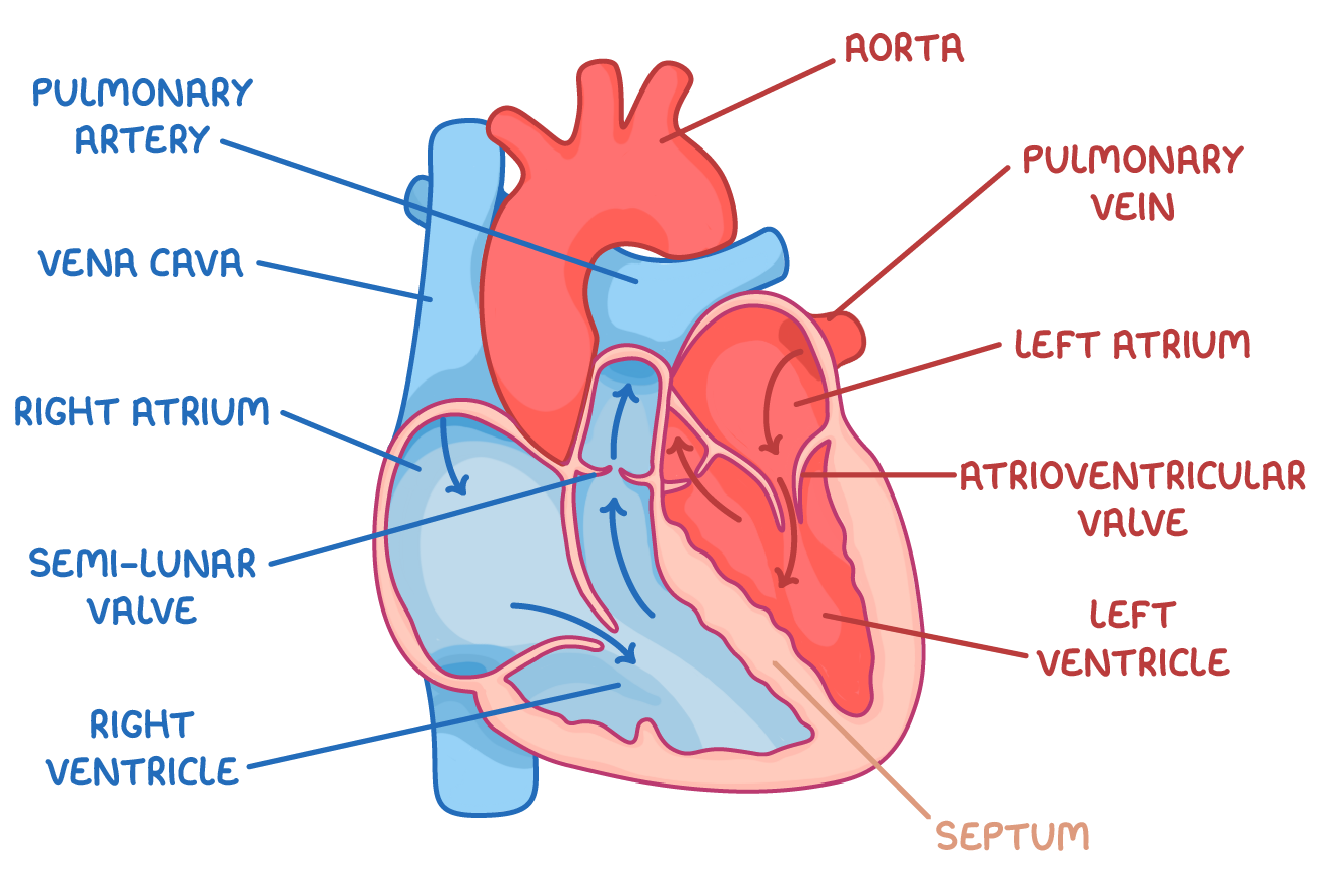Heart Structure
This lesson covers:
- The chambers of the heart
- The valves of the heart
- The blood vessels associated with the heart
- How the structure of the heart relates to its function
Heart chambers
The human heart is made up of four chambers: the left and right atria, and the left and right ventricles.
Differences between atria and ventricles:
- Atria - The top chambers in the heart that collect blood from blood vessels.
- Ventricles - The bottom chambers in the heart that pump blood into blood vessels.
The left side of the heart contains oxygenated blood, and the right side contains deoxygenated blood. This forms two separate pumping mechanisms.
The heart has two separate pumping mechanisms because:
- Blood pressure drops in the lungs as it flows through the capillaries.
- A single pump would slow the blood flow to the body cells.
- Two pumps increase the pressure before the blood circulates.
The septum separates the two sides of the heart, preventing oxygenated and deoxygenated blood from mixing.
Valves in the heart
There are valves in the heart that prevent backflow of blood in the wrong direction.
The atrioventricular valves:
- The tricuspid valve is located between right atrium and right ventricle.
- The bicuspid (mitral) valve is located between left atrium and left ventricle.
- Both valves prevent backflow of blood into the atria when the ventricles contract.
The semi-lunar valves:
- These are located between the ventricles and the pulmonary artery and the aorta.
- They prevent the backflow of blood into the ventricles when they relax.
The blood vessels associated with the heart
A major blood vessel connects to each of the four chambers of the heart.

These blood vessels are:
- The pulmonary vein - This moves oxygenated blood into the left atrium from the lungs.
- The aorta - This moves oxygenated blood from the left ventricle to the body.
- The vena cava - This moves deoxygenated blood into the right atrium from the body.
- The pulmonary artery - This moves deoxygenated blood from the right ventricle to the lungs.
Note: The right side of the heart actually appears in images on the left, and vice versa.
Relating heart structure to function
The different chambers of the heart have walls with different thicknesses.
This is because of their different functions.
The ventricle walls are thicker than the atria walls
The ventricles have thicker walls with more muscle than the atria.
This is because:
- The atria only need enough pressure to pump blood a short distance into the ventricles.
- The ventricles need a lot of pressure to pump blood a long distance out of the heart to other organs.
The left ventricle wall is thicker than the right ventricle wall
The left ventricle has a thicker wall with more muscle than the wall of the right ventricle.
This is because:
- The right ventricle only needs enough pressure to pump deoxygenated blood a short distance to the lungs.
- The left ventricle needs a lot of pressure to pump oxygenated blood to the other more distant organs of the body.